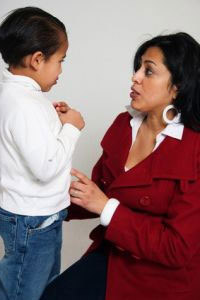 Children are very resilient — but they are not unbreakable. No matter their age, children are deeply hurt when they are physically, sexually, or emotionally abused. When children see and hear violence, their world feels unsafe and insecure.
Children are very resilient — but they are not unbreakable. No matter their age, children are deeply hurt when they are physically, sexually, or emotionally abused. When children see and hear violence, their world feels unsafe and insecure.
Exposure to violence can overwhelm children at any age and lead to problems in their daily lives. Some children may have an emotional or physical reaction. Others may find it harder to recover from a frightening experience. Exposure to violence — especially when it is ongoing and intense — can harm children’s natural, healthy development unless they receive support to help them cope and heal.
Children’s reactions to exposure to violence can be immediate or delayed. Reactions differ in severity and cover a range of behaviors. People from different cultures may have their own ways of showing their reactions. How a child responds also varies according to age.
Young Children (5 and younger)
- Be irritable or fussy or have difficulty calming down
- Become easily startled
- Resort to behaviors common to being younger (for example, thumb sucking, bed wetting, or fear of the dark)
- Have frequent tantrums
- Cling to caregivers
- Experience changes in level of activity
- Repeat events over and over in play or conversation
Young children’s reactions are strongly influenced by caregivers’ reactions.
Elementary School-Age Children (6–12 years)
- Have difficulty paying attention
- Become quiet, upset, and withdrawn
- Be tearful and sad and talk about scary feelings and ideas
- Fight with peers or adults
- Show changes in school performance
- Want to be left alone
- Eat more or less than usual
- Get into trouble at home or school
Teenagers (13–18 years)
- Talk about the event all the time or deny that it happened
- Refuse to follow rules or talk back with greater frequency
- Complain of being tired all the time
- Engage in risky behaviors
- Sleep more or less than usual
- Increase aggressive behaviors
- Want to be alone, not even wanting to spend time with friends
- Experience frequent nightmares
- Use drugs or alcohol, run away from home, or get into trouble with the law
 Teachers can play a critical role in preventing and reducing the impact of exposure to violence on children. They can help children by creating a predictable environment, listening to their stories, and assuring them that whatever happened was not their fault.
Teachers can play a critical role in preventing and reducing the impact of exposure to violence on children. They can help children by creating a predictable environment, listening to their stories, and assuring them that whatever happened was not their fault.
Teachers can help children exposed to violence by knowing and watching for signs of possible exposure to violence. While no single behavior proves that a child has been exposed to violence, teachers can watch for physical signs such as cuts or bruises, unexplained changes in behavior, and emotional signs such as depression, mood swings, and fearful or anxious behavior.
Teachers of preschoolers and young children might observe that a child is crying more than usual, is difficult to calm, startles easily, or screams and panics during sleep. Teachers of elementary aged students might notice that a child has become more aggressive, has returned to old fears or developed new ones, has become apprehensive about going home or express a wish that the teacher were the parent. Teachers of teens might see violence, rebellion, a refusal to follow rules or a lack of concerned about his or her appearance.
Experts agree that a child’s relationship with a caring adult is critical for developing resilience and beginning the healing process. It is very important that students have an opportunity to talk about what they have witnessed and how they feel with caring adults who can listen and understand.
Teachers can play an important role by creating an emotionally safe place for all children to learn, ensuring that those who may have been exposed to violence can begin their healing journey. Students may talk about exposure to violence all at once, or in bits and pieces in order to “test” the adult’s responses.
Children exposed to violence often need specialized assessment and interventions that teachers cannot provide. In all cases, teachers who are concerned about a student’s exposure to trauma should follow school protocol, and may need to refer the child to other professionals within the school system, such as psychologists, school nurses, social workers, or school counselors.
Many children experiencing crises or violence are also at risk for child abuse and neglect. All States have child welfare systems that receive and respond to reports of child abuse and neglect, offer services to families, provide foster homes for children who must be removed from their parents’ care, and work to find permanent placements for children who cannot safely return home. Domestic violence does not equal child abuse and neglect, and therefore not all cases of domestic violence must be reported to child protective services. When responding to families affected by domestic violence, it is very important to consider simultaneously the safety of the child and the safety of the adult victim.
State-by-state information on reporting requirements can be found at http://www.childwelfare.gov/
systemwide/laws_policies/state.
For more information and resources, please contact the Safe Start Center, a National Resource Center for Children’s Exposure to Violence:
1-800-865-0965
info@safestartcenter.org
Edited from materials produced by Safe Start, a program of the Office of Juvenile Justice and Delinquency Prevention

 .
.